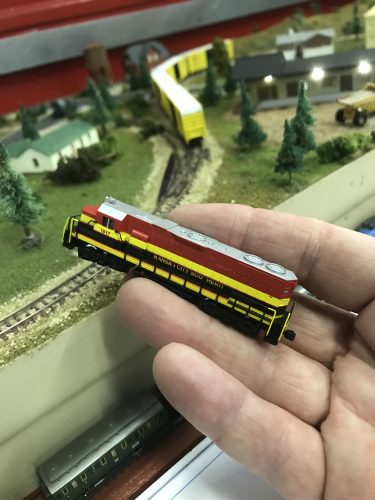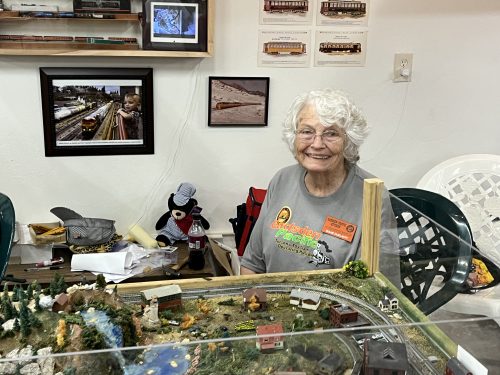History
Z scale is one of the smallest commercially available model railway scales (1:220), with a track gauge of 6.5 mm / 0.256 in. Introduced by Märklin in 1972, Z scale trains operate on 0–10 volts DC and offer the same operating characteristics as all other two-rail, direct-current, analog model railways. Locomotives can be fitted with digital decoders for independent control. Model trains, track, structures, and human/animal figures are readily available in European, North American, and Japanese styles from a variety of manufacturers.
Z scale was introduced by the German model train manufacturer Märklin in 1972 at the Nuremberg Toy Fair. It was the brainchild of Helmut Killian, Märklin’s head design engineer at the time. The letter Z was chosen to designate the new scale, its place as the last character of the German and English alphabets signaling the thought that there would never be a smaller commercial model railway scale. While there have been attempts since then to bring even smaller scales to the market, they remain niche products without a wider following – the largest market being T gauge (1:450, 3 mm (0.118 in) gauge), designed in Japan and manufactured in China.
Z scale, at its inception, was predominantly a European scale, but it has an increasing number of followers in other parts of the world. There are now also manufacturers in North America and Japan and China, among others. Z scale enthusiasts throughout Europe, North America, and Japan participate regularly at most national and regional model railroad exhibitions and shows, where they have demonstrated the outstanding operation and layout design characteristics of the scale. While prices were initially higher for Z scale products (particularly locomotives) compared with those available in larger scales, as volume production, computer-aided design and manufacturing techniques, and the number of competing manufacturers increased, prices have come down to a point comparable to those of high-quality models in other scales.
As early as 1988, Märklin announced their intention to offer digital train control systems in Z scale, and Märklin’s 1988 Z scale product catalog listed three locomotives with a built-in digital decoder. However, the technology was not developed enough, and the manufacturer had to cancel these plans, mainly due to heat dissipation problems in locomotive decoders. Since then, these problems have been solved, Z scale has embraced advanced electronics (e.g., microprocessors originally developed for cell phones, surface-mount technology, etc.), and an increasing number of modellers have converted their locomotives to use third party digital model train control systems.
Due to the small size of Z scale and, in particular, the low weight of the locomotives (a small Z scale engine can weigh as little as 20 g (0.71 oz)), it can be challenging to ensure reliable operation. In particular, the track must be kept clean, as minuscule particles of dust, dirt, or corrosion can easily stop locomotives. Poorly-installed trackwork can be a source of consistent derailing of rolling stock (although this is true, to some extent, in any scale). All of this can create issues for modellers who are interested in prototypical operations – in particular, switching.




